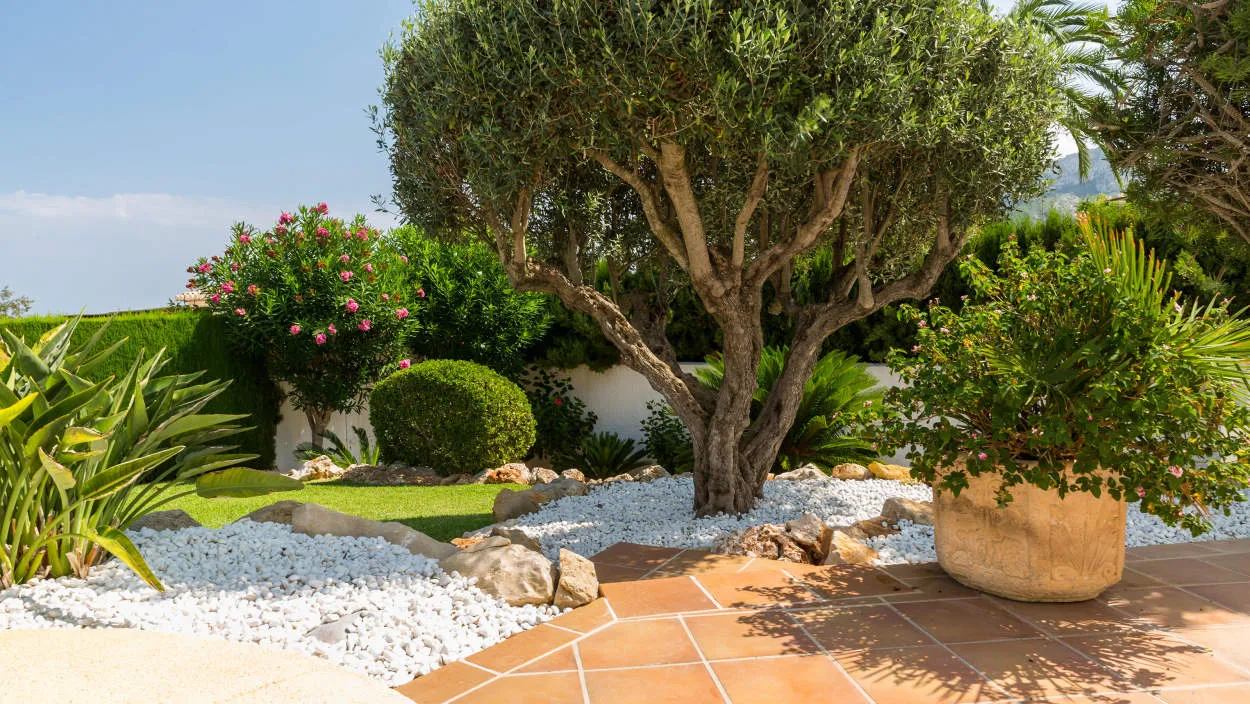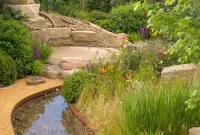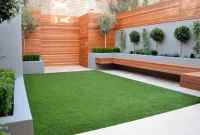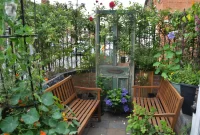Mediterranean Garden Design: Bringing Warmth to Your Landscape
Characteristics of Mediterranean Gardens
Mediterranean gardens are known for their distinctive features that add warmth and beauty to any landscape. These gardens are inspired by the natural landscapes of the Mediterranean region, particularly countries like Italy, Spain, and Greece. Here are some key characteristics of Mediterranean gardens:
1. Drought-tolerant Plants
Mediterranean gardens typically feature plants that can thrive in dry and hot climates. These plants have adapted to limited water availability and exhibit characteristics like succulent leaves, small size, and a preference for well-drained soil. Examples of popular drought-tolerant plants include lavender, rosemary, oleander, and cacti.
2. Gravel or Stone Pathways
A common feature in Mediterranean gardens is the use of gravel or stone pathways. These materials not only add a rustic charm but also help with water drainage. The paths are often designed to meander through the garden, creating a sense of discovery and inviting exploration.
3. Terracotta and Ceramic Pots
Mediterranean gardens often incorporate terracotta and ceramic pots in their design. These pots add a touch of vibrant color and can be used to showcase a variety of plants, from small herbs to bright flowers. They also serve as a reminder of the region’s rich pottery tradition.
4. Climbing Vines and Trellises
To create vertical interest and provide shade, Mediterranean gardens frequently feature climbing vines and trellises. Grapevines, bougainvillea, and jasmine are popular choices that add a lush and romantic feel to the garden. The vines can be trained to climb walls, pergolas, or arbors.
5. Citrus Trees
No Mediterranean garden is complete without the presence of citrus trees. Lemon, orange, and lime trees not only provide fresh fruit but also add a refreshing fragrance and vibrant color to the landscape. Their glossy green leaves and bright fruits evoke the sunny Mediterranean atmosphere.
6. Courtyards and Outdoor Living Spaces
Mediterranean gardens often embrace the concept of outdoor living. Courtyards and terraces with comfortable seating areas, pergolas, or gazebos provide spaces for relaxation, entertaining, and enjoying the surrounding beauty. These areas are often adorned with colorful tiles or mosaics.
In conclusion, Mediterranean gardens are characterized by their usage of drought-tolerant plants, gravel or stone pathways, terracotta and ceramic pots, climbing vines, citrus trees, and well-designed outdoor living spaces. By incorporating these elements into your own garden, you can create a warm and inviting Mediterranean oasis.
Selecting Drought-Resistant Plants
In the world of Mediterranean garden design, incorporating drought-resistant plants is essential to create a landscape that thrives in warm climates. These plants possess the ability to survive and flourish in arid conditions, making them ideal choices for homeowners looking to bring warmth to their landscapes.
1. Consider Native Plants
When selecting plants for your Mediterranean garden, prioritize native species. Native plants are naturally adapted to the local climate and soil conditions, making them more likely to thrive without requiring excessive watering.
2. Embrace Succulents
Succulent plants, such as agaves, aloes, and cacti, are renowned for their ability to store water in their leaves or stems. These adaptable plants not only endure drought but also add unique shapes and textures to your garden.
3. Opt for Gray and Silver Foliage
Plants with gray or silver foliage, like lavender, artemisia, and dusty miller, are well-suited to Mediterranean garden designs. Their light-colored leaves reflect sunlight, reducing evaporation and helping them conserve water.
4. Choose Mediterranean Herbs
Mediterranean herbs, such as rosemary, thyme, and sage, are not only drought-resistant but also release delightful scents, adding another layer of sensory appeal to your garden. Additionally, these herbs are often culinary favorites, providing access to fresh flavors right outside your door.
5. Group Plants Based on Water Needs
When planning your garden, organize plants with similar water requirements together. This practice allows for more efficient irrigation, as you can target watering to specific zones rather than drenching the entire garden.
With these guidelines, you can create a stunning Mediterranean garden that radiates warmth while remaining sustainable in dry climates. Remember to adapt the selection of plants based on your specific region’s climate and soil conditions.
Using Stone and Terracotta
In Mediterranean garden design, incorporating stone and terracotta elements can greatly enhance the warmth and charm of your landscape. These natural materials not only add visual interest but also evoke a sense of tradition and timelessness. Here are some creative ways to utilize stone and terracotta in your garden:
1. Stone Pathways
Integrate stone pathways throughout your garden to create a rustic and inviting atmosphere. Use different types of stones, such as cobblestones or flagstones, to add texture and variety. These pathways not only facilitate movement but also serve as visual focal points.
2. Terracotta Pots
Add a touch of Mediterranean charm by using terracotta pots for your plants. The warm, earthy tones of terracotta beautifully complement the vibrant colors of flowers and foliage. Arrange them strategically in different areas of your garden to create a balanced and cohesive look.
3. Stone Walls
Incorporate stone walls into your garden design to add structure and character. These walls can serve as boundaries, retaining structures, or simply as decorative elements. Choose stones with varying shapes and sizes to create an interesting visual pattern.
4. Terracotta Tiles
For outdoor seating areas or patios, consider using terracotta tiles for the flooring. The warm tones and natural textures of these tiles will create a cozy and inviting space for relaxation and entertainment.
5. Stone Water Features
Add a soothing element to your garden by incorporating stone water features, such as fountains or cascades. The sound of flowing water will create a tranquil ambiance, while the stone materials will blend harmoniously with the surrounding vegetation.
Incorporating stone and terracotta in your Mediterranean garden design can effortlessly bring warmth, character, and a timeless appeal to your landscape. Experiment with different combinations and arrangements to create a truly unique and enchanting outdoor space.
Creating Outdoor Living Spaces
When it comes to designing your outdoor landscape, incorporating functional and inviting areas for relaxation and entertainment is essential. Creating outdoor living spaces allows you to extend your living area outdoors, connecting with nature while enjoying the comfort of your home.
In this article, we will explore the concept of Mediterranean garden design and how it can bring warmth and charm to your landscape. A Mediterranean garden design draws inspiration from the coastal regions of Southern Europe, showcasing an amalgamation of natural elements, vibrant colors, and soothing textures.
Choosing the Right Elements
To create the perfect Mediterranean garden, start by selecting the right elements. Opt for rustic paving materials such as terracotta tiles or natural stone to add warmth and authenticity to your outdoor space. Incorporate ornamental plants like lavender, bougainvillea, and rosemary that thrive in a Mediterranean climate and release aromatic scents.
Introduce an outdoor dining area with a pergola or canopy and adorned with comfortable seating to provide a cozy ambiance for al fresco meals. Consider adding a decorative water feature like a mosaic-tiled fountain or a serene Koi pond to evoke a sense of tranquility.
Creating Visual Interest
Mediterranean garden design is known for its visually pleasing features. To create visual interest, use elements like colorful ceramic pots, ornate wrought iron furniture, and trellises adorned with climbing vines. Incorporate different levels in your landscape through the use of terraced gardens or raised planters.
Another great idea is to create diverse seating areas, such as cozy nooks with cushioned benches or swinging hammocks, encouraging relaxation and contemplation. Consider adding a shady pergola draped in bougainvillea or grapevines to provide relief from the summer sun.
Enhancing Nighttime Enjoyment
To fully enjoy your outdoor living space during the evenings, effective lighting is key. Incorporate atmospheric lighting elements such as string lights, lanterns, or discreetly placed spotlights to create a magical ambiance. Illuminate pathways and focal points to ensure safety while adding a touch of drama to your garden.
In addition, consider adding a cozy outdoor fireplace or fire pit. These features not only provide warmth on cooler nights but also create a central gathering point for conversations and storytelling.
In conclusion
Creating outdoor living spaces with a Mediterranean garden design adds a touch of warmth, tranquility, and beauty to your landscape. By incorporating the right elements, creating visual interest, and enhancing nighttime enjoyment, you can transform your outdoor area into a welcoming paradise ideal for entertaining or simply relaxing alone with nature.
Conclusion
A Mediterranean garden design is the perfect way to bring warmth and style to your landscape. With its emphasis on natural elements, such as stone, earthy colors, and lush greenery, this style creates a welcoming and serene outdoor space. Whether you have a small balcony or a large backyard, incorporating Mediterranean-inspired elements like terracotta pots, pergolas, and fragrant plants will transport you to the charm of the Mediterranean region.







